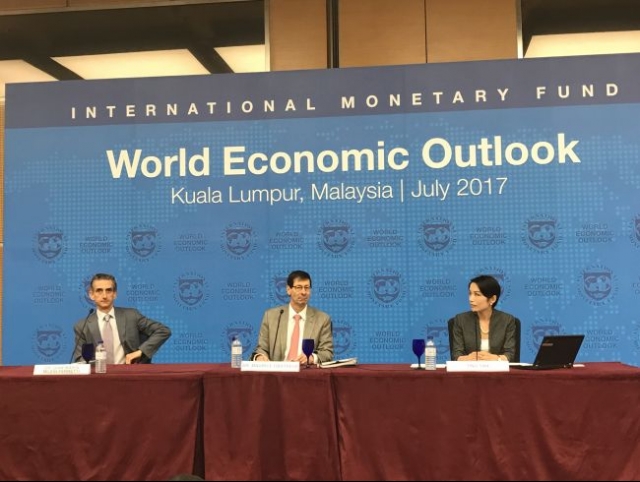IMF: Vietnam's dynamic economy continues to do well
“Strong manufacturing and FDI, an improving construction sector, and robust domestic demand continue to underpin activity [in Vietnam],” Mr. Ranil Salgado, Assistant Director, Asia and Pacific Department at the International Monetary Fund (IMF), told the recent launch of its World Economic Outlook (WEO) Update in Kuala Lumpur, Malaysia.

He added that the country’s headline inflation reached 5 per cent year-on-year in late 2016 - early 2017, reflecting rises in health and education cost, and had fallen close to the 4 per cent target by June this year.
The IMF forecasts that Vietnam’s growth will be 6.3 per cent in 2017 and the same in 2018.
Higher long-term growth would require more forceful reforms to create a level playing field for the private sector, upgrade the country’s institutions, and reorient its growth model, to be led by the private sector, before rapid aging sets in, according to the IMF.
IMF Directors recently welcomed ongoing structural reforms and underscored that Vietnam will need to build a sustainable, modern economy before the demographic tailwinds fade. For this, more extensive policy action is needed to reform institutions and raise potential growth. Reforms of State-owned enterprises and improved outcomes from vocational and tertiary education will also be critical. Directors commended authorities for ratifying the Paris Agreement and for putting climate change and the implementation of the Sustainable Development Goals at the core of their policy agenda. They stressed that higher environmental taxes and better pricing of externalities in the energy sector can help promote a green, more resilient economy.
According to the WEO Update, the pickup in global growth anticipated in the April WEO remains on track, with global output projected to grow 3.5 per cent in 2017 and 3.6 per cent in 2018. "The unchanged global growth projections mask somewhat different contributions at the country level. US growth projections are lower than in April, primarily reflecting the assumption that fiscal policy will be less expansionary going forward than previously anticipated," said Mr. Maurice Obstfeld, Economic Counsellor and Director of Research, IMF.
Growth has been revised up for Japan and especially the Euro area, where positive surprises in activity in late 2016 and early 2017 point to solid momentum. China’s growth projections have also been revised upwards, reflecting a strong first quarter of 2017 and expectations of continued fiscal support. Inflation in advanced economies remains subdued and generally below targets and has also been declining in several emerging economies, such as Brazil, India, and Russia.
While risks around the global growth forecast appear broadly balanced in the near term, they remain skewed to the downside over the medium term. On the upside, the cyclical rebound could be stronger and more sustained in Europe, where political risk has diminished. On the downside, rich market valuations and very low volatility in an environment of high policy uncertainty raise the likelihood of a market correction, which could dampen growth and confidence. The more supportive policy tilt in China, especially strong credit growth, comes with rising downside risks to medium-term growth. Monetary policy normalization in some advanced economies, notably the US, could trigger a faster-than-anticipated tightening in global financial conditions. And other risks discussed in the April 2017 WEO, including a turn towards inward looking policies and geopolitical risks, remain salient./.
VNF/Dtinews



